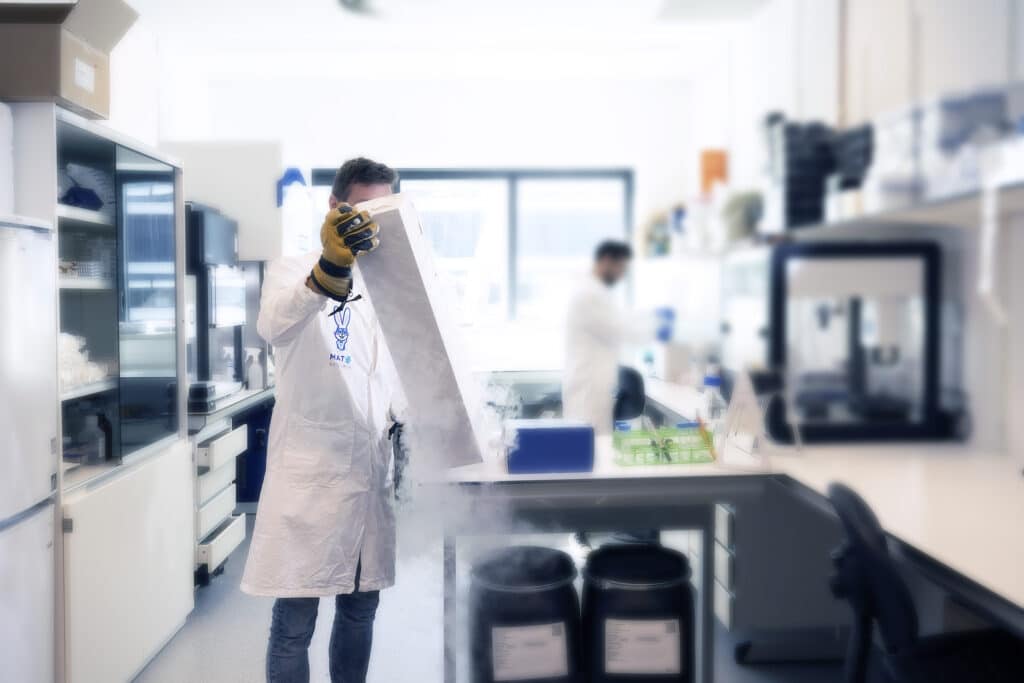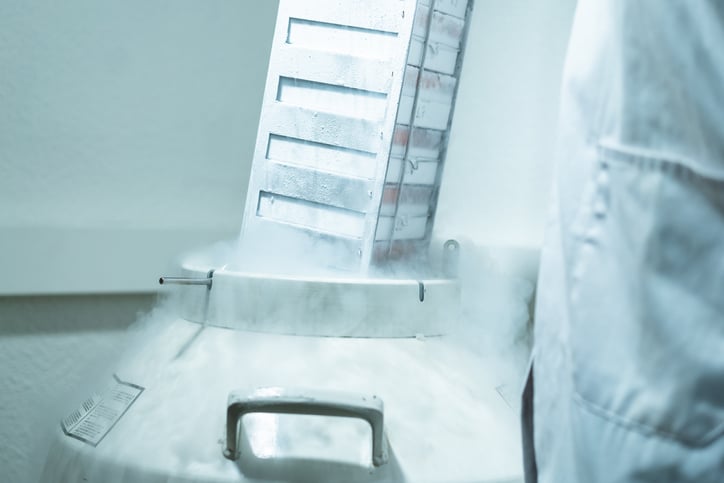MAT Methods PBMC & Mono-Mac 6
There are two commercialized MAT methods available in the market — distinguished by the type of cell source they employ. The European Pharmacopeia accepts only the one using cryopreserved, pooled PBMCs as an endotoxin and non-endotoxin assay.
Available MAT methods

Method classification
Currently, two different types of MAT kits are available on the market: (i) the cryopreserved pooled PBMC MAT and (ii) the Mono-Mac 6.
Method differentiators
Among others, the primary differentiator between these kits is the cell source they use. The Mono-Mac 6 (MM6) employs the Monocytic Continuous Cell Line based on blood derived from an acute monocytic leukemia patient. The cryopreserved, pooled PBMC MAT uses monocytes derived from whole blood of healthy donors in the US that are then pooled and cryopreserved to maintain their fresh complexion.
Cryopreserved, pooled PBMC analysis

Legal feasibility
The EP underlines cryopreserved, pooled PBMCs as an appropriate cell source for detecting bacterial endotoxins and non-endotoxin pyrogens. As a result, the MAT based on cryopreserved, pooled PBMCs is sufficient as a stand-alone pyrogenicity assay for batch release or as a risk assessment (replacing RPT) where BET is used.
Suitability to EP-compliant release testing
Cryopreserved, pooled PBMCs are made from multiple donors with different genetic backgrounds. EP recommends a minimum of 4 and preferably 8 for batch release testing, which is possible based on the offerings of the vendor chosen by producers.
Mono-Mac 6 analysis

Legal feasibility
On the feasibility of MM6 as a pyrogenicity assay the EP (2.6.8.) concludes:
”Monocytic cell lines are appropriate for the detection of bacterial endotoxins but have limited use for the detection of non-endotoxin pyrogens.”
The MM6’s unsuitability for non-endotoxin detection means similar risk assessments to those required for BET would need to be employed wherever it’s used. In other words, the use of MM6 would require the use of cryopreserved pooled MAT in tandem – unnecessarily increasing pyrogen testing costs.
Suitability to EP-compliant release testing
The MM6 cell line is made from a single donor and represents a single genetic background, which contradicts the EPs accepted practices for batch-release testing. Specifically, EP regulators required pooled donors with varied genetic backgrounds where MAT is used for release testing.